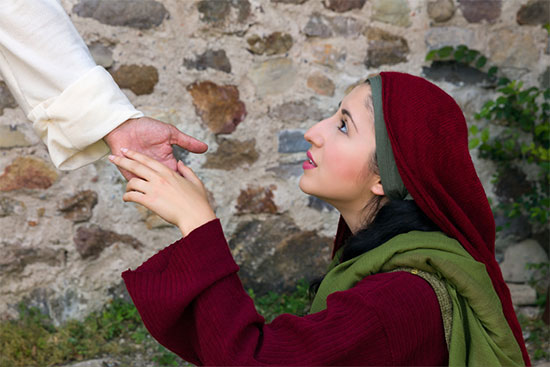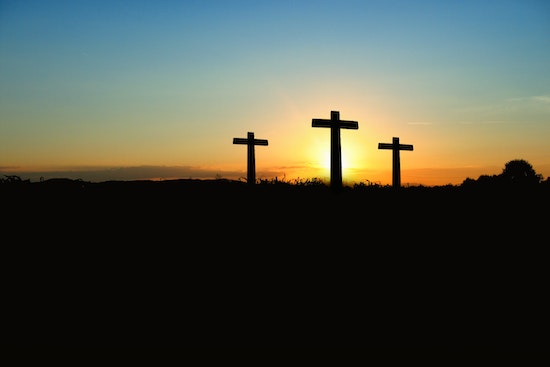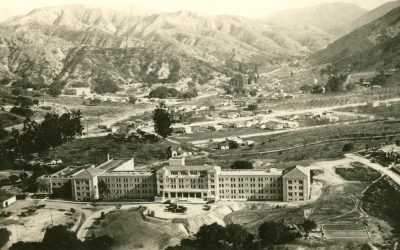Who is Mary Magdalene in the Bible
She is mentioned in all 4 canonical accounts of the Gospel of the Bible (Matthew, Mark, Luke and John) and was one of several women who was not only a disciple of Jesus, but also supported His ministry financially (Luke 8:1-3).
Her deep devotion to Jesus is clear because she was with Him during His ministry, during his crucifixion (while most of His other followers were in hiding), and after His resurrection.
Mary was a very common Jewish name at the time of Jesus, so it’s not surprising that among the many followers of Jesus, there were multiple Marys. Mary Magdalene is often misunderstood and even misidentified as other women named Mary in the New Testament.
To better understand who Mary Magdalene really was, we’ll look at:
- Her life before Jesus
- Her life with Jesus
- Common misconceptions about her
- What we can learn from her
Let’s begin with what we can learn from the Bible about before Jesus came into her life.
Mary Magdalene’s life before Jesus
Not much is said in Scripture about Mary Magdalene’s early life, but as her last name suggests, she was from Magdala, a fishing village on the western shore of the Sea of Galilee.1
She’s believed to have been wealthy since she helped support Jesus’ ministry from her own resources (Luke 8:2-3), though the source of such wealth isn’t mentioned.
A lot of Jesus’ life and ministry took place in and around the Galilean region, which included Magdala. It makes sense, then, that Mary Magdalene would encounter Jesus Himself at some point during His ministry.
The Bible says that Mary Magdalene was possessed by seven demons (Luke 8:2). Seven! Jesus healed many people from demon possession during His ministry, but the Bible records only one other person who had more demons than Mary Magdalene (Mark 5:1-13; Luke 8:26-33).
People who were demon-possessed in the Bible showed a variety of behaviors. Some were mute (Mark 9:17), some had seizures (Matthew 17:15), others had physical disabilities (Luke 13:10-11). Sometimes, someone who was possessed by evil spirits posed a disturbance and a threat to others and themselves (Mark 5:2-5). They were sometimes even cast out of society and isolated from their family and friends.2
We can speculate about how she may have acted, as the show The Chosen depicts, but the Bible doesn’t mention any particular behaviors that Mary Magdalene showed when she was possessed. It’s likely she was treated as other demon-possessed people were treated in her time.
But once Mary Magdalene is healed, we see that she is in her right mind, has all of her faculties, and is active in society as a follower of Jesus.
It’s this miraculous healing that serves as a springboard for the remainder of Mary’s life as a faithful follower of Christ.
Mary Magdalene’s life with Jesus
 In Luke 7, the chapter in Luke right before Mary Magdalene is first mentioned, Jesus tells a parable to a Pharisee named Simon to demonstrate the connection between forgiveness and love.
In Luke 7, the chapter in Luke right before Mary Magdalene is first mentioned, Jesus tells a parable to a Pharisee named Simon to demonstrate the connection between forgiveness and love.
In the parable, two people are forgiven a debt neither can pay. One debt is 500 denarii–more than a year’s salary for an average worker.3 The other debt, 50 denarii, was much smaller, but couldn’t be paid nonetheless.
Jesus asks Simon an important question: “‘Now which of them will love him [the moneylender] more?’ Simon answered, ‘The one, I suppose, for whom he cancelled the larger debt.’ And He said to him, ‘You have judged rightly’” (Luke 7:42-43, ESV).
The message here is clear—forgiveness awakens and magnifies love, and when you’re forgiven much, you love the one who forgave much.
The Bible doesn’t mention how long Mary Magdalene suffered from evil spirits, but being possessed by multiple demons for any amount of time is unimaginable. Her healing must have sparked insurmountable joy, gratitude, and even curiosity about this man named Jesus.
How much love, then, did Mary Magdalene pour out to Jesus after He healed her from seven demons?
Mary Magdalene’s role in the ministry of Jesus
After being healed, Mary Magdalene expressed her love and devotion to Jesus with her priorities—her money, her time, and her daily life. She listened to His teachings and studied the Torah alongside Christ’s other followers. She was a disciple in every sense of the word, which was almost unheard of for women in that time.4
Accepting Mary Magdalene’s money was a little risky for Jesus. While it was generally acceptable, enemies of Jesus could have easily criticized Him for having women supporters.5
But the possibility of being criticized was never a concern for Jesus. And it did not deter Mary Magdalene from following Him.
She even stuck by Him when other disciples went into hiding during Jesus’ crucifixion.
Mary Magdalene’s presence at the crucifixion, burial and resurrection of Jesus

Image by Gerd Altmann from Pixabay
Matthew, Mark, Luke, and John all record that Mary Magdalene was present at Jesus’ crucifixion, burial, and tomb after His resurrection.
Jesus had predicted His arrest, death, and rise from the dead multiple times to the twelve main disciples before He was arrested. And sadly, when the mob arrived to arrest Him, the disciples all retreated and hid because they feared they would also be arrested and killed for following Jesus (Matthew 26:56). Peter even denied knowing Jesus when he was questioned about his relationship with Him (Luke 22:54-62).
The followers of Jesus knew that it was dangerous to be associated with Him. Throughout His ministry, Jesus had to defend His stance that He was the Son of God and that He had the authority to carry out His ministry. So we can only imagine how it felt to have His closest followers leave Him at the time of His greatest need.
Mary Magdalene, however, did not abandon Jesus during His time of need. In fact, she—along with Mary the mother of James and Salome—followed Him to his crucifixion to specifically take care of His needs (Mark 15:40-41).
But as Jesus died on the cross while Roman soldiers humiliated Him, all Mary Magdalene could do was watch (John 19:24-25).
After His death, Mary Magdalene followed closely that night as Jesus’ body was prepared and laid in a tomb nearby (Matthew 27:59-61). Even after death, she didn’t want to leave His side.
Very early the following morning, she and two others went to anoint His body, but all they found was an empty tomb. The stone had been rolled from the entrance of the tomb and there were no guards around!
Before Jesus appeared to His disciples, He appeared to Mary Magdalene (Mark 16:9). She was the first person to witness Jesus’ resurrection. John’s account of the Gospel records that she mistook Him for the gardener, but after Jesus said her name, “Mary,” she immediately recognized that it was Him (John 20:14-16).
No matter the circumstances, Mary Magdalene was devoted to Jesus. She was willing to stand by His side even when others didn’t, and Jesus knew He could trust her to share with the other disciples that He was risen from the dead (John 20:17-18).
But if this is what the Bible says about Mary Magdalene, what other ideas about her identity exist?
Misconceptions about Mary Magdalene
There are several misunderstandings about who Mary Magdalene was.
Due to speculation and various ideas from art and literature, she is often mistaken to be a prostitute and has been misidentified as the “sinful woman” who poured oil on Jesus’ head and washed Jesus’ feet with her tears (Luke 7:37-38).6 However, the Bible does not connect either of these things with Mary Magdalene.
Because Mary was a common name, Mary Magdalene is sometimes mistaken for Mary the mother of Jesus and wife of Joseph or Mary of Bethany, Lazarus and Martha’s sister. Lazarus, Martha, and Mary were from Bethany, which was a village in Judea, two miles from Jerusalem (John 11:1,18).
But we know that Mary Magdalene was from Magdala, a village in Galilee.
It is also rumored and repeated in the popular novel The Da Vinci Code that she was married to Jesus and that they even had a child together.
But there is no biblical evidence for any of these misinterpretations about Mary Magdalene. Instead, we can learn plenty from what the Bible does say about her, even though it’s not a lot.
What we can learn from Mary Magdalene
Mary Magdalene was a remarkable woman who received the gift of healing and followed Jesus as a result. She was brave, an active learner, and supported Him financially and emotionally.
Though other women followed Jesus as well, her name is the one most mentioned among these women in the Bible, and we can learn a lot from her life and example.
We have a Savior
One important lesson that the life of Mary Magdalene shows us is that we have a personal Savior.
No matter what has happened in your past, Jesus is always eager and willing to heal and transform you.
Your past does not have to be your identity. With God, your identity is new in Christ (2 Corinthians 5:17). There is great honor in that!
An encounter with Jesus leads to a devoted relationship
We can also learn from Mary Magdalene that complete devotion to Jesus Christ is an appropriate response to His healing.
Sometimes when we receive a gift, we may not know how to express our thanks. Sometimes our words or deeds seem to pale in comparison to what was done for us.
Throughout Jesus’ ministry, He gave many the invitation to “follow Me.” To the disciples (Mark 1:17-18), scribes (Matthew 8:19-22), the “rich young ruler” (Matthew 19:21), and to all people (Luke 9:23), He extends the same invitation to “follow Me.”
When Mary Magdalene was healed from seven demons, she experienced the true character of God. He came to her personally with love and compassion. And she responded to His call of: “If anyone serves me, he must follow me” (John 12:26).
Devotion to Christ is a demonstration of faith and love in Him
 But what does following Jesus even look like?
But what does following Jesus even look like?
For Mary Magdalene, it meant gratitude, focus, priority, and service. She gave Jesus her time, her attention, and her resources. She trusted Him to teach her the Bible, which didn’t happen for women often in Mary’s day.
She may have even been among the women in the upper room with the disciples when they were praying and waiting for the outpouring of the Holy Spirit, which means she would have been one of the first members of the early church, though the Bible does not name her specifically. We definitely know, though, that she followed Jesus and cared for Him when He needed it most.
For any of us, following Jesus might look like studying the Bible to know more about Him, or donating to church or to someone in need, volunteering at your local community center, or always being on the lookout for someone who might need encouragement. It might look like helping a loved one or a stranger who’s dealing with a tough situation. Or it might be as simple as agreeing to go wherever God leads, regardless of if it was part of your own plans or not.
Mary probably didn’t plan for her life to turn out the way it did. But after meeting Jesus, she embraced her life’s new focus wholeheartedly.
So no matter the time or place we’re in, following Jesus looks like surrendering to Him. And welcoming the adventure, the peace, the purpose, and the challenges this entails.
We can make the choice to live our lives for Christ just like Mary Magdalene did. We can give our time, our resources, our minds, and our hearts completely to Him as an act of faith and love.
So while there is plenty of fiction and fable surrounding who Mary Magdalene was, what we know for sure about her is plainly stated in the Bible: as a response to being healed by Jesus, she followed Him, supported His ministry, learned from Him, and was loyal to Him in His greatest time of need.
Interested in learning about other followers of Jesus? Check out,
- Grudem, Wayne and Thomas R. Schreiner. “Notes on Luke,” in The ESV Study Bible, English Standard Version, Crossway, 2008, p. 1967. [↵]
- Keener, Craig S. “Notes on Luke.” NIV Cultural Backgrounds Study Bible, 1763. [↵]
- Ibid., 1760. [↵]
- Keener, Craig. “Luke,” in NIV Cultural Background Study Bible, edited by John H. Walton and Craig S. Keener, Zondervan, 2016, p. 1761. [↵]
- Ibid.. [↵]
- Beavis, Mary Ann, PhD, “Who is Mary Magdalene?” The Center for Christian Ethics at Baylor University (2013). [↵]
Questions about Adventists? Ask here!
Find answers to your questions about Seventh-day Adventists
More Answers
Why Many Seventh-day Adventists Choose a Vegetarian Diet
Why Many Seventh-day Adventists Choose a Vegetarian Diet?You may have an Adventist friend who is vegetarian, or maybe you’re attending a Seventh-day Adventist Church for the first time and notice the potluck doesn’t have any meat. This isn’t unusual in Adventism. In...
The Health Benefits of Fresh Air You Should Know About
The Health Benefits of Fresh Air You Should Know About“When you can’t breathe, nothing else matters,” the American Lung Association tells us. And while that’s true, the kind of air you’re breathing will determine the health benefits you experience. Breathing fresh...
What Do Seventh-day Adventists Choose to Eat?
What Do Seventh-day Adventists Choose to Eat?Food blogs overwhelm the internet; food fads are all the rage; and copycat and healthy versions of food are the subject of many a get-together. Eating—and eating the best way—is a big deal. And everybody has a different...
10 Incredible Ways Sunlight Can Improve Your Health
10 Incredible Ways Sunlight Can Improve Your HealthAre you concerned about sunlight’s negative effects? You might be the one who lathers on the sunscreen and covers up when you go outside. Or maybe you avoid being outside as much as possible. You might be surprised,...
Why Is Water So Important?
Why Is Water So Important?We all know that water is a substance we can’t live without. It quenches our thirst and keeps us hydrated on the inside. And it’s necessary for hygiene and cleansing on the outside too. But did you know that the cleansing properties of water...
Ellen White’s Writings and the Adventist Health Message
Seventh-day Adventists are known for their emphasis on healthy living. And Ellen G. White was a significant influence in the development of this priority and practice among Adventists.
Health Clinics
Ellen White and Adventist Healthcare—Ahead of Their Time Medical care in the mid-1800s was primitive, to say the least. Basic concepts we take for granted—such as proper handwashing or recognizing the dangers of bloodletting—were nonexistent. And doctors often had...
What Did Ellen White Teach about Vegetarianism?
What Did Ellen White Teach about Vegetarianism?One thing you might have heard about Seventh-day Adventists is their emphasis on a vegetarian lifestyle. If you’re wondering why that is, it goes back to our church’s humble beginnings: As Adventists studied the Bible,...
How Ellen White’s Teachings Can Improve Your Health
How Ellen White’s Teachings Can Improve Your Health Healthcare in the nineteenth century was said to leave “more disease than it took away” with its use of bloodletting and “medicines” like mercury and arsenic.1 As people questioned these methods, new approaches...
Change Your Perspective on Life with These 5 Mindsets
5 Biblical Mindsets to Change Your Life for the Better Sometimes, life is just plain hard. There’s no way around it. So would thinking about things differently really change anything? Our perspective on life, and everything it throws at us, affects more than we’re...
Bible Promises for When You’re Worried or Fearful
Bible Promises for When You’re Worried or Fearful The Bible is full of beautiful promises that can comfort us in a variety of situations. They can give us hope when we are hopeless, make us feel grateful for God’s love, and comfort us when we’re grieving or suffering....
12 Practical Ways to Overcome Worry
12 Practical Ways to Overcome Worry DISCLAIMER: This content is for informational purposes only. It does not constitute any professional medical advice and is not intended as a substitute for professional mental health therapy. It’s easy to get stuck in a cycle of...
How the Bible Talks About Worry, Fear, and Anxiety
How the Bible Talks About Worry, Fear, and Anxiety Worry and fear are the ingredients of anxiety. It’s easy to see how the world isn’t perfect—and the anticipation of a bad event or experience (that may or may not even happen) can end up draining the peace and...
How to Calm Anxious Thoughts, Using the Bible
How to Calm Anxious Thoughts, Using the Bible You were expecting a phone call from your daughter half an hour ago, and she still hasn’t called. She’s also not answering your calls. You feel your heart thumping as your thoughts race: What if she’s been in a car...
What You Should Know About the Adventist Health Studies
What You Should Know About the Adventist Health StudiesYou may have heard that Seventh-day Adventists care about health. But what you may not know is that Adventists have been the subjects of long-term research into lifestyle and health. Since 1958, researchers from...
Benefits of Sunlight
Yes, There Are Health Benefits of SunlightDespite the bad reputation it’s gotten, sunlight is generally associated with positivity, as shown by songs like “You Are My Sunshine,” or phrases that refer to delightful people as having a “sunny disposition.” There’s a...
Why Your Body Needs Rest for Optimal Health
Why Your Body Needs Rest for Optimal HealthStruggling to think straight? Wondering why you can’t remember that important tidbit you heard earlier today? Feeling like your emotions are about to explode? These are just some of the symptoms that can reveal your need for...
The Seventh-day Adventist Diet: One of Our Key Longevity Secrets
The Seventh-day Adventist Diet: One of Our Key Longevity SecretsOats, avocados, lentils, tofu—probably not what you first think of in a standard American diet. But if you show up at the home of an Adventist, chances are you may be served one of these staples. Out of a...
Why You Need Fresh Air
Why You Need Fresh Air“When you can’t breathe, nothing else matters,” the American Lung Association tells us. We couldn’t agree more! Breathing in clean air is an essential part of caring for our bodies, which God has given us. Together with other health principles,...
Sabbath Meal
Everything You Need to Know About Sabbath MealsFor Seventh-day Adventists, sharing a Sabbath meal with friends and family is one of the most special and memorable parts of the Sabbath. That’s why we want to share with you all about Sabbath meals and why they’re such a...
Adventists and Healthy Living
Adventists and Healthy LivingWhat’s the Adventist “Health Message” All About? One thing Seventh-day Adventists are known for is their emphasis on living healthy lives. Since our bodies are living temples of the Holy Spirit (1 Corinthians 6:19, 20), we strive to stay...
Water’s Importance—Physical Benefits and Spiritual Applications
Water’s Importance—Physical Benefits and Spiritual Applications We all know that water is a substance we can’t live without. Not only does it quench our thirst and keep us hydrated from the inside, but it’s necessary for hygiene and cleansing on the outside as well....
How Important is a “Day of Rest?”
How Important is a “Day of Rest?” Why God Created a Day for Downtime by Martin Casper Do you ever experience the feeling of complete overload? Do you feel like the only way you can get ahead is by slamming it 24/7? I hear these types of comments more and more...
7 Reasons Why a Day of Rest is Important
7 Reasons Why a Day of Rest is ImportantWe live in a fast-paced world. It seems as if success is measured in how much you can do in a short amount of time. (Extra points for the service or product that is available 24/7). The idea that we will be more successful if we...
How do Adventists choose what to eat?
How do Adventists choose what to eat?Every day, parents go through the ritual of getting their kids to eat what is healthy and good while trying to steer them away from what can hinder the growth of their developing bodies. Nutritionists work with their clients to...
How Can I Have a Better Marriage?
Is it possible to have a happy marriage?
Why are many Adventists Vegetarian?
Why are many Adventists Vegetarian?The diet intended for man is outlined in Genesis 1:29, “And God said, ‘See, I have given you every herb that yields seed which is on the face of all the earth, and every tree whose fruit yields seed; to you it shall be for food.’”...
Didn’t find your answer? Ask us!
We understand your concern of having questions but not knowing who to ask—we’ve felt it ourselves. When you’re ready to learn more about Adventists, send us a question! We know a thing or two about Adventists.




















